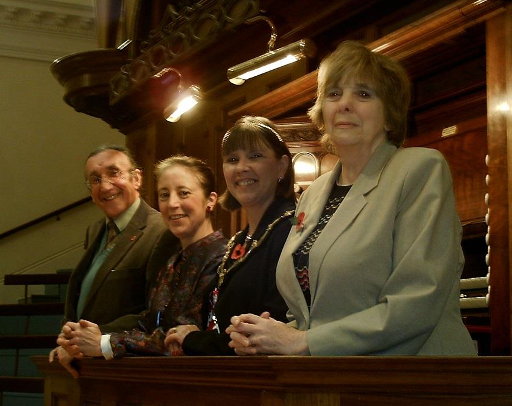Sophie-Véronique Cauchefer-Choplin (St-Sulpice, Paris) (Anniversary Recital)
Suite Liturgique pour Orgue: Denis Bédard
Introduction and Passacaglia (Sonata no. 8): Josef Rheinberger
Allegretto in F minor: César Franck
Méditation (Symphony no. 1): Charles-Marie Widor
Toccata (Symphony no. 5): Charles-Marie Widor
Esquisses Byzantines: Rosace – Tu es Petra: Henri Mulet
Improvisation sur une thèmes donnée

Our Anniversary Recital this year sees the welcome return of Sophie-Véronique Cauchefer-Choplin, co-titulaire of the great Parisian church of St-Sulpice where she presides at the vast historic Cavailé-Coll organ which fills the west end of the building.
She proves that “modern” music is not frightening as she begins with the Suite Liturgique by contemporary French Canadian composer Denis Bédard, one of whose “mission statements” is that he believes in formal structure and the beauty of melody.
French organists do not confine themselves to French music, as Mme Cauchefer-Choplin demonstrates with her next piece, two movements from the the 8th Sonata of Rheinberger, himself surely the most famous native of Lichtenstein.
Then it’s the two great Parisian masters, César Franck and Charles-Marie Widor, both of them initially in quiet mood. But to end the first half, Mme Cauchefer-Choplin pays homage to her great predecessor at St-Sulpice with Widor’s world-famous Toccata.
The second half of her programme recalls another Parisian composer, the enigmatic Henri Mulet. He grew up in the shadow of Le Sacré-Coeur and commemorated the building in his Esquisses Byzantines of which we are to hear two: Rosace, an impressionistic response to the building’s stained glass, and the exciting and often-heard toccata Tu Es Petra.
The recital ends with an improvisation on a submitted theme (or themes). This is an art for which French organists are renowned. With no warning a theme is presented; within moments a new work has been created. Prepare to be amazed!
